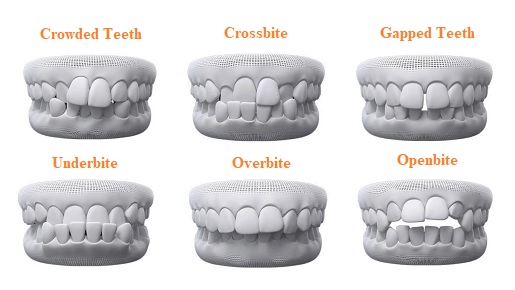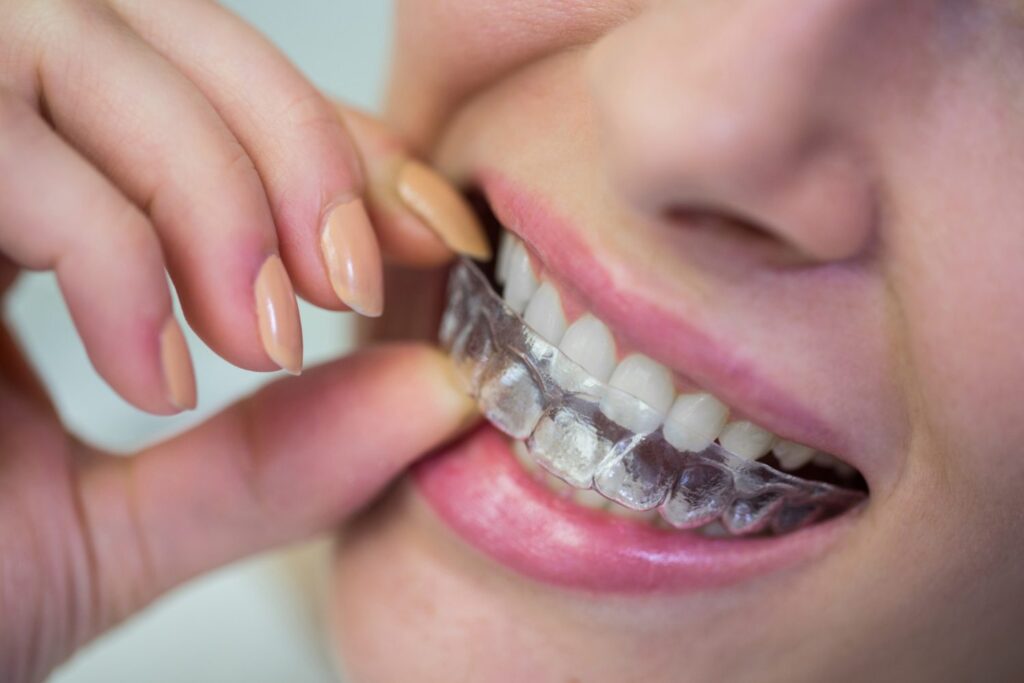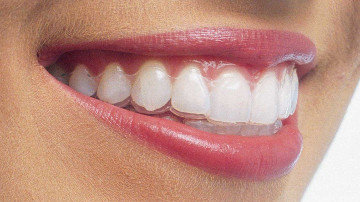The Ultimate Contrast: Invisalign vs. Traditional Braces for Adults
Invisalign vs. Traditional Braces: Which Choice Is Right for You?
When considering orthodontic therapy, the selection in between Invisalign and typical dental braces presents several vital aspects that merit mindful analysis. Invisalign supplies a very discreet choice with removable aligners, while standard braces offer an extra visible yet efficient option for extreme misalignment. Each option encompasses distinct benefits and downsides associated with aesthetic appeals, convenience, therapy duration, and expense. Understanding these nuances is critical for making an educated decision that lines up with your personal choices and way of life. The inquiry continues to be: which option will finest satisfy your orthodontic requirements and assumptions?
Review of Therapy Choices

In comparison, standard braces include steel braces and wires that are bound to the teeth. This technique applies constant stress over time to attain placement. While efficient for complicated orthodontic concerns, conventional braces need regular visits for modifications and can position challenges in keeping oral hygiene as a result of the difficulty of cleansing about wires and brackets.
Both choices have their merits, and the option frequently rests on certain oral conditions, way of living choices, and client compliance. Ultimately, consulting an orthodontic expert is critical for identifying one of the most appropriate therapy plan customized to individual requirements. Understanding the subtleties of each choice can considerably influence the general success of orthodontic therapy.
Aesthetic Factors To Consider
A substantial variable influencing the selection between Invisalign and traditional dental braces is the aesthetic appeal each treatment offers. Invisalign aligners are crafted from clear plastic, making them basically undetectable when worn.
In comparison, typical braces include steel braces and wires, which can be a lot more recognizable. While developments in orthodontic technology have resulted in the growth of smaller braces and tinted elastics, traditional dental braces still maintain an even more noticeable account. For some people, the visibility of dental braces might prevent them from looking for needed therapy.
Ultimately, the option between Invisalign and typical braces might pivot on personal choices relating to aesthetics. Patients who prioritize discernment frequently favor Invisalign, while those who are much less worried regarding exposure might go with standard braces. Understanding the visual implications of each option is critical for making an informed decision that straightens with one's way of life and choices.
Comfort and Convenience

In regards to comfort, Invisalign aligners are detachable, allowing individuals to enjoy their preferred foods without limitation and maintain optimum dental hygiene. Cleaning and flossing are simplified, as the aligners can be secured during these regimens, whereas conventional dental braces require cautious navigating around cables and braces.
In contrast, conventional dental braces necessitate routine changes, making them less practical for those with busy schedules. On the whole, the comfort and ease of Invisalign make it an enticing choice for many individuals looking for orthodontic treatment.
Treatment Period and Efficiency
While both Invisalign and traditional dental braces are efficient in correcting oral imbalances, the period of therapy can vary significantly between both choices. Usually, Invisalign therapy can take anywhere from 12 to 18 months, depending on the complexity of the situation. The clear aligners work by progressively moving teeth into their wanted settings, and routine follow-ups with an orthodontist help ensure development remains on track.
On the other hand, traditional dental braces commonly call for a longer commitment, generally ranging from 18 months to three years. This results their explanation from their fixed nature and using braces and cords, which can be more effective for severe misalignments and complex instances (Invisalign). The treatment effectiveness of conventional dental braces is well-documented, as they enable exact adjustments and better control over tooth movement
Eventually, the choice between Invisalign and standard braces might depend upon both the awaited therapy period and the details dental concerns at hand. Consulting with an orthodontist is crucial, as they can supply tailored referrals based on private needs, making certain the chosen approach aligns with desired results and durations.
Cost Comparison and Insurance Options
Cost plays a significant role in the decision-making procedure for individuals considering orthodontic therapy, whether choosing Invisalign or conventional dental braces. Typically, the price of Invisalign ranges from $3,000 to $8,000, while conventional braces commonly set you back in between $2,000 and $6,000. Aspects influencing these expenses include the complexity of the instance, the period of treatment, and geographical area.
Several oral insurance plans give partial insurance coverage for orthodontic therapies, but the specifics can differ commonly. Usually, conventional braces might be a lot more often covered by insurance coverage plans compared to Invisalign, which some find out here now insurance firms categorize as an aesthetic procedure.
Additionally, numerous orthodontic methods supply flexible payment plans, making both treatment options much more available. Individuals should ask about prospective financing options and price cuts for ahead of time settlements. Reviewing the complete price, consisting of insurance policy benefits and layaway plan, is important for making an informed choice that aligns with both aesthetic choices and budget plan considerations.

Conclusion
In summary, the selection between Invisalign and conventional dental braces rests on numerous factors, including visual preferences, comfort, therapy duration, and price. Invisalign provides a very discreet, detachable alternative that helps with oral hygiene and nutritional flexibility, while traditional dental braces may be much more appropriate for complicated oral concerns and often come with a reduced price factor. Ultimately, examination with an orthodontist is necessary to analyze individual scenarios and determine one of the most proper treatment option for attaining optimum dental placement.
When considering orthodontic treatment, the choice in between Invisalign and standard dental braces provides numerous crucial aspects that warrant mindful analysis.Comparing Invisalign and traditional dental braces reveals distinctive treatment alternatives for orthodontic adjustment.While both Invisalign and conventional dental braces are reliable in fixing dental misalignments, the duration of treatment can differ dramatically between the 2 choices.Price plays a significant role in the decision-making procedure for people thinking about orthodontic treatment, whether opting for Invisalign or standard dental braces.In recap, the selection between Invisalign and traditional dental braces hinges on numerous elements, including aesthetic choices, comfort, therapy duration, and expense.